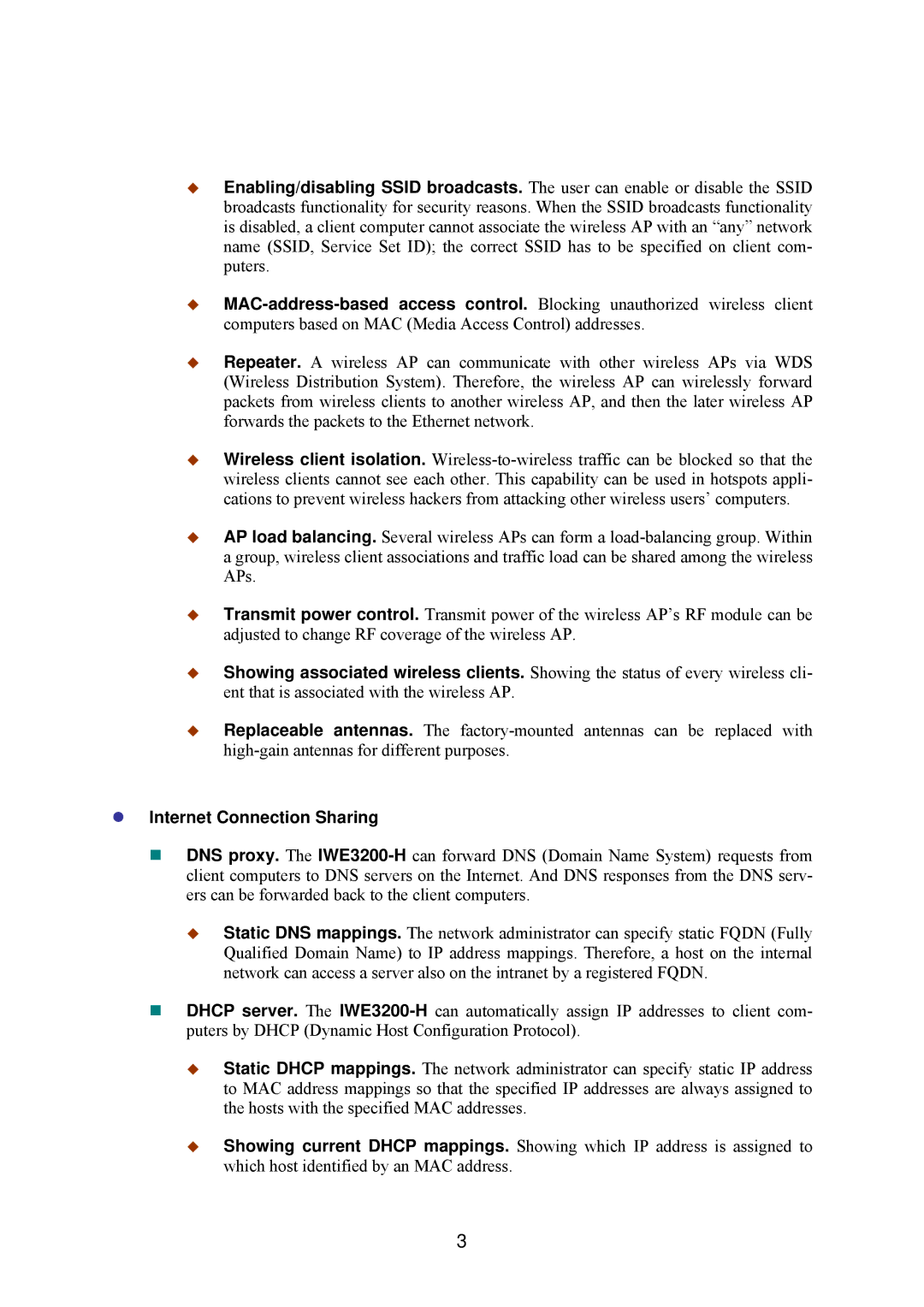Enabling/disabling SSID broadcasts. The user can enable or disable the SSID broadcasts functionality for security reasons. When the SSID broadcasts functionality is disabled, a client computer cannot associate the wireless AP with an “any” network name (SSID, Service Set ID); the correct SSID has to be specified on client com- puters.
Repeater. A wireless AP can communicate with other wireless APs via WDS (Wireless Distribution System). Therefore, the wireless AP can wirelessly forward packets from wireless clients to another wireless AP, and then the later wireless AP forwards the packets to the Ethernet network.
Wireless client isolation.
AP load balancing. Several wireless APs can form a
Transmit power control. Transmit power of the wireless AP’s RF module can be adjusted to change RF coverage of the wireless AP.
Showing associated wireless clients. Showing the status of every wireless cli- ent that is associated with the wireless AP.
Replaceable antennas. The
zInternet Connection Sharing
DNS proxy. The
Static DNS mappings. The network administrator can specify static FQDN (Fully Qualified Domain Name) to IP address mappings. Therefore, a host on the internal network can access a server also on the intranet by a registered FQDN.
DHCP server. The
Static DHCP mappings. The network administrator can specify static IP address to MAC address mappings so that the specified IP addresses are always assigned to the hosts with the specified MAC addresses.
Showing current DHCP mappings. Showing which IP address is assigned to which host identified by an MAC address.
3
